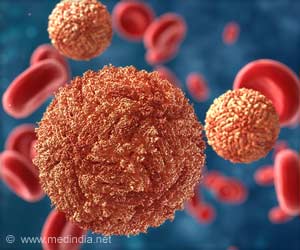An exciting new approach to imaging local and metastatic tumors turns the fictional bioluminescence, nanoparticles and gene manipulation into a reality.

"Currently, we do not have a sensitive and specific non-invasive technique to detect bone metastases, so we are very encouraged by the results of this study" says Fisher, Thelma Newmeyer Corman Endowed Chair in Cancer Research and co-leader of the Cancer Molecular Genetics research program at VCU Massey Cancer Center, chairman of the Department of Human and Molecular Genetics at the VCU School of Medicine and director of the VCU Institute of Molecular Medicine. "Additionally, because AEG-1 is expressed in the majority of cancers, this research could potentially lead to earlier detection and treatment of metastases originating from a variety of cancer types."
Imaging the expression of a gene in real time is not an easy task. To do it, the scientists used a promoter called AEG-Prom. A promoter is a set of chemical instructions coded in DNA that initiates activity in a gene. The team combined AEG-Prom with imaging agents consisting of a gene that produces firefly luciferase, the bioluminescent substance that makes fireflies glow, and a gene called HSV1tk, which initiates a chemical reaction when specific radioactive compounds are administered. The team then inserted the combination into tiny nanoparticles that are injected intravenously. When exposed to specific proteins that activate the AEG-Prom, including the c-MYC protein that is elevated in many cancer cells, the AEG-Prom initiates activity in the imaging agent, and the location of cancer cells expressing the imaging agent are made visible using sensitive imaging devices.
"The imaging agents and nanoparticle used in this study have already been tested in unrelated clinical trials. Moving this concept into the clinic to image metastasis in patients is the next logical step in the evolution of this research," says co-lead author Martin G. Pomper, M.D., Ph.D., William R. Brody Professor of Radiology at Johns Hopkins Medical Institutions. "My colleagues and I are working toward this goal, and we look forward to opening a study to deploy this technology as soon as possible."
Fisher and Pomper are pioneering the use of cancer-specific and cancer-selective gene promoters to image cancer. Previous studies in melanoma and breast cancer leveraged another gene originally discovered by Fisher called progression elevated gene-3 (PEG-3) using a promoter known as PEG-Prom. In addition to imaging, this approach could also be used to deliver therapeutic agents, such as targeted therapies, directly to local and distant tumors sites and allow physicians to monitor drug delivery in real time. Separate studies are currently under way to examine the therapeutic potential of this strategy.
Source-Eurekalert















